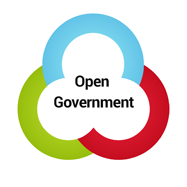Data
Data publication guide
Open Data means that information is available in an open format and can be freely used, reused and shared by anyone for any purpose.
(EU Open Data and PSI Directive 2019/1024)
In Austria and internationally, the 10 principles of open administrative data (cf. white paper of Cooperation OGD Austria) form the basic criteria for defining open data.

It is about enabling the download or a free reuse of existing (internally available) datasets for private or commercial purposes with minimal or no legal, technical or financial restrictions.
It is about open government, which provides citizens with transparent information and is open to feedback to improve services.
The data portal data.gv.at acts as a central inventory or search engine of all available open public sector data in Austria and is in turn linked to the European Data Portal.
 LegalMake available under a free license.
LegalMake available under a free license. In accordance with the agreement, the Austrian administration uses the open license Creative Commons 4.0 with attribution(CC-BY 4.0) for any data sets by way of Cooperation OGD Austria. This contributes to mutual legal certainty. Apart from the naming of the data publishing body, there are no further restrictions on the use of data for further users.
In accordance with the agreement, the Austrian administration uses the open license Creative Commons 4.0 with attribution(CC-BY 4.0) for any data sets by way of Cooperation OGD Austria. This contributes to mutual legal certainty. Apart from the naming of the data publishing body, there are no further restrictions on the use of data for further users.The indication of the source enables the correct attributability of the data to the public administration. This proof, which can be verified at any time, indicates the corresponding trustworthiness of official data and also helps to avoid misinformation. For open data under CC-BY 4.0 there is a basic disclaimer of warranty and liability.
 TechnologyPermanent web link to the resource and machine-readable formats
TechnologyPermanent web link to the resource and machine-readable formatsData is made available via the web server of the public body concerned. Thus, the storage and maintenance of primary data continues to be performed by the data controller.
Data should be published in the existing editable file formats without additional effort. In principle, open formats are to be preferred, which enable operating system-independent and free usability.
Machine readability means that no manual content conversion processes are required (such as typing text from photos).Examples
Texts .odt, .rtf, .epub
(but also .docx is allowed)Tables .csv, .ods, .xml, JSON, RDF
(but also .xlsx is allowed)Cartographic data KML, GeoJSON, WFS Dynamic data Dynamic (rapidly changing) data must always be published via an application programming interface (API) (e.g. in JSON or XML format)  OrganizationalMetadata
OrganizationalMetadataFor the structuring and searchability of data via the data portal data.gv.at, it is necessary to fill in a metadata sheet for each data record. By means of this metadata, the respective data set is described in more detail (information on the contents, data controller, update frequency, license, etc.).
See, for example, the following example: COVID-19: Temporal presentation of data on Covid19 cases per state.-
Data Management

In terms of overall data management, each body must check before publication that the procedure does not violate data protection law. It is also possible to make parts of data sets available, to subject them to anonymization or to provide aggregated data. In principle, the principle of completeness of data applies. The data.gv.at team can be contacted for advice.
When publishing data, it is important to look at it from the user’s perspective. Data is of decisive added value if it can be reused as widely as possible. The choice of formats depends crucially on the type of data to be provided and the international distribution of corresponding formats. Generally, open, non-proprietary formats are the best choice (such as Open Document Formats).
Examples
 |
 |
|
| Bad example: PDF
Text files are often published as PDF. However, PDF is a closed format, which basically does not allow further editing. Copying and using content of this file format is difficult. In particular, tabular data or charts of interest to data users cannot be processed automatically. Therefore, publication in PDF format should not be made without additional availability in other, editable formats. |
Good example: Actual state or Open Document Formats
The basic approach is to publish text or table documents as they exist or as they are stored (in their “as is” state) (e.g. .docx, .xlsx). However, it is recommended to publish the primary data in Open Document formats (.odt, .ods) or as CSV file (for tables). |
In documents or publications, it is recommended that an open license notice indicating the Creative Commons Open License 4.0 International (CC-BY 4.0) with pictogram be placed on the opening pages of the publication for ease of recognition.
Advantages: Legal certainty, a wide range of uses and increased discoverability of open knowledge are made possible. For reusers, it is made clear under which conditions content may be reused or that content of the work may only be reused if the source reference is given.
 |
This document is published under the open license Creative Commons Lizenz 4.0 International (CC-BY 4.0). |
Download the pictogram at https://www.data.gv.at/cc-by.png
Teilen
2 Klicks für mehr Datenschutz: ein wesentliches Open Data-Prinzip besagt, dass keine Daten veröffentlicht werden dürfen, die einen Rückschluß auf einzelne natürliche Personen zulassen. Ein ähnliches Prinzip zum Schutz persönlicher Daten wird auf data.gv.at bei Teilen-Buttons für Social-Media-Netzwerke verfolgt: da diese Teilen-Buttons allein beim Laden bereits Daten übermitteln, bieten wir Ihnen die Möglichkeit der Selbstbestimmung - Sie können selbst entscheiden, ob ein Teilen-Button aktiviert werden soll oder nicht.







